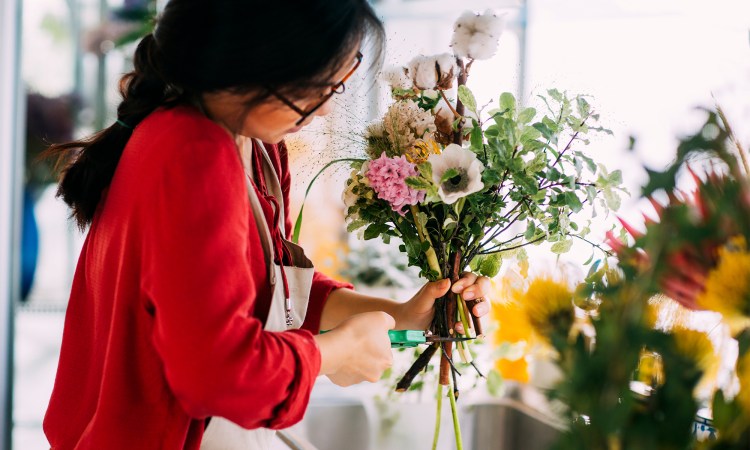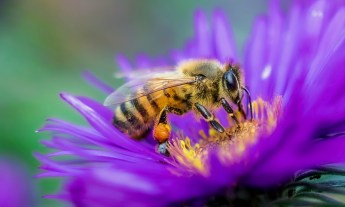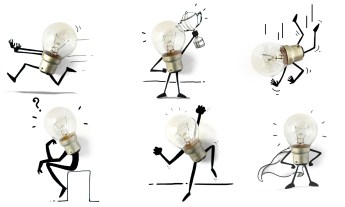
Flowers are powerful symbols. People around the world use them to mark rites of passage, festivals and significant life events. Lilies and tulips represent renewal during spring and Easter; marigolds are believed to guide the dead to their ancestral homes on Dia de Los Muertos; and a bunch of roses on Valentine’s Day or Mother’s Day conveys love. And year-round, no wedding or funeral is complete without flowers.
Blooms are a booming business, and the global cut flowers industry is worth up to $55 billion USD a year, according to Rabobank. In the US alone, Mother’s Day accounts for 26 percent of all holiday purchases of cut and potted flowers, on par with Christmas and Hanukkah and exceeded only by Valentine’s Day.
But behind the beautiful bouquets can be significant environmental and human costs. Here’s how the flower industry is impacting the planet — and what you should ask before you gift again.
Imported cut flowers are often flown thousands of miles in refrigerated airplane holds
The country that is the world’s largest consumer of cut flowers is the US, with a majority of imported flowers from Colombia and Ecuador. In Europe, most imported flowers sold there are from equatorial East Africa.
The single largest producer of cut flowers in the world is Colombia, which exported an estimated 660 million stems in 2020. Other top producers are Ecuador, Sri Lanka and Kenya, the latter supplying one-third of all roses sold in the EU. China is also an up-and-coming producer.
The global flower trade is rapid and episodic, which amplifies the industry’s environmental footprint — the ideal is to get a bloom from field to vase in three to five days. For Colombian producers, with farms mostly located near Bogotá’s international airport, flowers can lose 15 percent of their value for every extra day spent traveling.
Many of the flowers are grown in high-altitude, industrial-scale greenhouses (for disease, pest and humidity control), and these flower farms can exceed 500 acres. Flowers are also thirsty plants, which contributes to high water use and chemical runoff. For example, some critics claim that drought-stricken Lake Naivasha, the center of the industry in Kenya, has seen half of its water drawn off for use in flower greenhouses.
On top of pollutants and water use, flowers can generate serious carbon emissions because of refrigeration and long-haul transport. Stems may be transported up to 6,000 miles in refrigerated airplane holds. In 2018, Valentine’s Day flowers grown in Colombia and flown to US airports produced some 360,000 metric tons of CO2, according to estimates by the International Council on Clean Transportation. To put that into perspective, that’s roughly equivalent to 78,000 cars driven for one year.
Even after flowers are flown into the US, they’re sometimes trucked thousands of miles in gas-guzzling trucks from hubs such as Miami, Newark and Los Angeles to locations across the nation.
But international transport isn’t the only culprit. When grown in cooler climates, flowers need heated greenhouses. That means domestic flower production can also generate high CO2 emissions because it’s electricity-intensive, notes David Bek PhD, cofounder of the sustainable cut flowers project at Coventry University UK. Far from the strong sun of the equator, these flowers may also require more chemicals in order to flourish.
In fact, the carbon footprint of flowers grown in cooler countries like the US can be more than 5.5 times greater than that of equatorial countries, says Melanie Dürr, global product manager for flowers and plants at Fairtrade International. But with renewable energy use from wind and solar on the rise, these numbers may be decreasing, Bek adds.
Workers and the people living near flower farms are paying the price
Our current model of flower consumption isn’t just harming the planet — it can harm workers as well. The environmental and human impact of the cut flower industry is on a par with other major agricultural products, says Jake Davignon, senior manager of US-Canada Markets Transformation at Rainforest Alliance. For example, despite some use of personal protective equipment, floriculture workers are exposed to toxins in fertilizers and insecticides, as well as preservatives used to extend the life of blooms. In countries like Australia, flowers may be treated with glyphosate, an herbicide and desiccant, before they can enter the country.
Local communities often pay the price. A group of US and Ecuadorian researchers found that children living close to Ecuador’s floricultural greenhouses — where pesticides were applied in the weeks preceding International Mother’s Day — had altered short-term brain activity. The researchers suggest that the children may have been exposed to contaminated clothing, shoes or tools brought home by floriculture workers. They’re also currently investigating whether pesticides are contaminating the water downstream from flower farms.
In addition to toxin exposure, workdays can be 16 hours. This makes it especially hard for women — who comprise most of the labor force — to get maternity leave and find childcare. In Kenya, women make up 60-70 percent of the workforce, and flowers are the country’s second largest export after tea. In Colombia, flower production is the largest employer of women in rural areas.
Labor conditions have somewhat improved since the 1990s, mostly through the use of certifications, says Jill Timms PhD, co-founder of the sustainable cut-flowers project at Coventry University. Still, many workers in low-income nations are still underpaid and chemical safety continues to be a problem.
Despite the industry’s shortcomings, Timms notes that it also creates opportunities for trade and jobs, especially in impoverished regions that have ideal flower-growing climates.
Here are 4 things to ask when buying your next bouquet:
Deciding what blooms can be complicated. Giving up cut flowers may reduce your carbon footprint, but purchasing them also supports jobs locally and globally. No single buyer can reverse the impacts of the flower industry, but consumers can communicate to producers and suppliers that there’s greater demand for ethically produced, sustainable flowers.
Bek and Timms recommend asking 4 key questions before your next flower purchase:
1. How far have your flowers traveled?
The supply chain is complex, so you might have to do some research if your flowers aren’t labeled. Unlike foodstuffs, flowers don’t have to disclose their country of origin. Bouquets might also include flowers from multiple countries, which can make it hard to calculate their carbon footprint.
2. Were they ethically and sustainably produced?
Organizations like Fairtrade have a certification process to ensure strict labor and environmental standards for major products. These sustainable flowers only cost on average 1.5 percent more to produce than conventional flowers, says Dürr of Fairtrade International. Rainforest Alliance, certified organic, and Certified American Grown are other popular certifications.
3. Who benefits from your purchase?
Most people buy flowers at the supermarket, farmer’s market, online or from a local florist. Supermarkets may offer cheap prices, but keep in mind that this can squeeze producers and keep workers’ wages low. On the flip side, some supermarkets have their own environmental and labor standards. For example, the US chain Whole Foods recently launched the Sourced for Good program, which includes US tulip farms.
Some large online flower retailers, like Urban Stems, also work directly with organizations like Rainforest Alliance. If you buy a bouquet from a local florist or farmer’s market, ask about their supply chain.
4. How can you reduce waste?
If you’re buying from a local retailer, ask for less packaging, take your own vase or look for environmentally-friendly alternatives to florist foam. Planting your own garden can also be a lower-impact way to cut enjoy flowers — plus, gardening can be good for your mental health and supports local bee populations. Finally, looking after your flowers and following care instructions can help you enjoy them longer.
Watch this TED Talk on the fascinating process of pollination:
Watch this TEDxGateway Talk and see how an artist brings flowers, shrubs and trees to life on paper:














